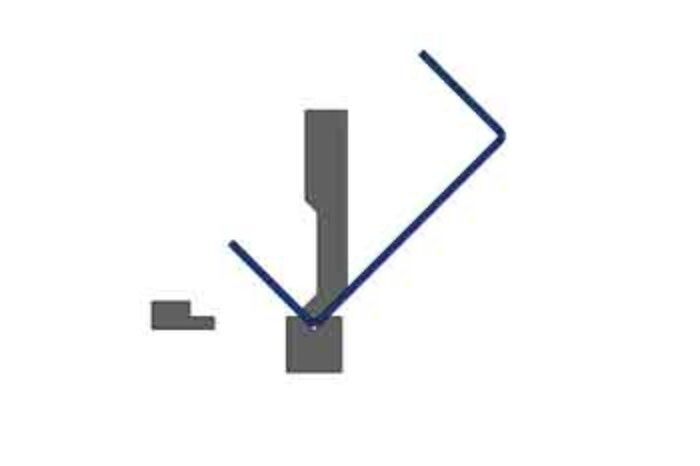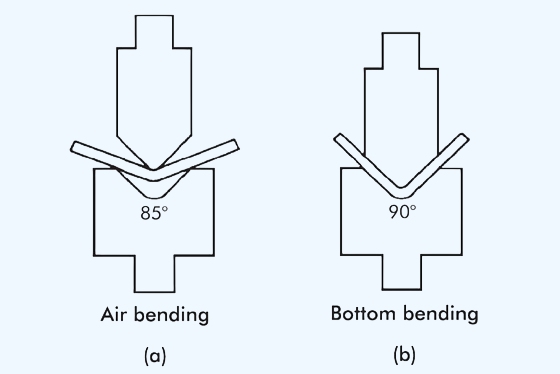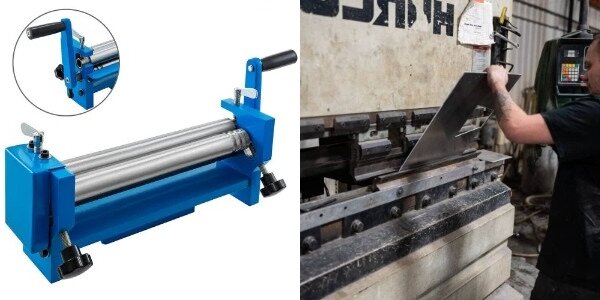When it comes to metal casting, many manufacturers are looking for a process that provides high precision, strong material properties, and the ability to produce complex shapes. This is where High Pressure Die Casting (HPDC) steps in. However, the process can be challenging to understand and implement without the proper knowledge.
The HPDC process offers many advantages, such as fast production rates, low material waste, and consistent part quality. However, specific equipment and expertise are required to ensure efficiency and cost-effectiveness. Let’s explore the key aspects of the process.
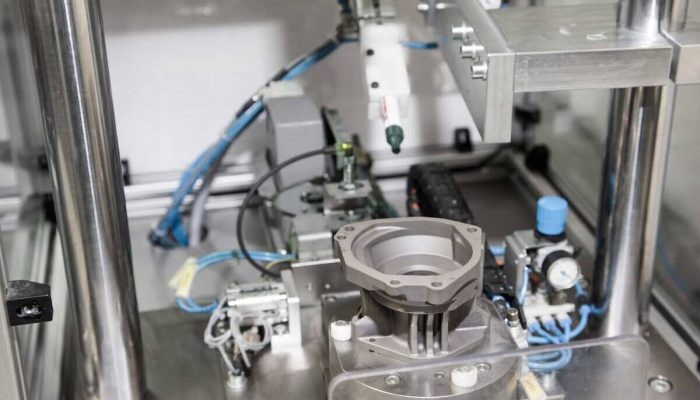
What is High Pressure Die Casting?
HPDC involves injecting molten metal into a metal mold under very high pressure. This pressure forces the molten metal into every part of the mold, resulting in highly detailed and precise components. Once the metal cools and solidifies, the part is ejected from the mold.
HPDC is most commonly used with aluminum, zinc, and magnesium alloys. Its speed makes it ideal for mass-producing parts with consistent quality.
The High-Pressure Die Casting Process Explained
The HPDC process is a precise method for producing metal parts quickly and efficiently. Below, we will break down each step of the process to give you a clearer picture of how it works.
Step 1: Preparation of Die and Mold
The first step in the HPDC process is preparing the die or mold. The die is usually made from high-quality steel to withstand molten metal’s intense pressure and heat. The mold is typically designed in two parts, with a core and cavity, to form the shape of the component.
Step 2: Metal Melting and Alloy Preparation
The metal, usually aluminum, zinc, or magnesium alloys, is placed in a furnace and heated to its melting point. The molten metal needs to be at the right temperature for injection—typically between 600°C and 700°C, depending on the alloy used.
Step 3: Injection of Molten Metal
A plunger forces the liquid metal into the die at 1,500-30,000 psi. This high pressure fills every detail of the mold in milliseconds, and fast injection prevents premature solidification.
Step 4: Cooling and Solidification
The metal cools inside the die, taking shape in 2-10 seconds. Cooling time depends on part thickness. Proper solidification prevents weak spots or warping.
Step 5: Ejection and Finishing of Cast Part
Ejector pins push the hardened part out of the die. Workers trim excess material (flash) and may apply machining or surface treatments to achieve the final specs.
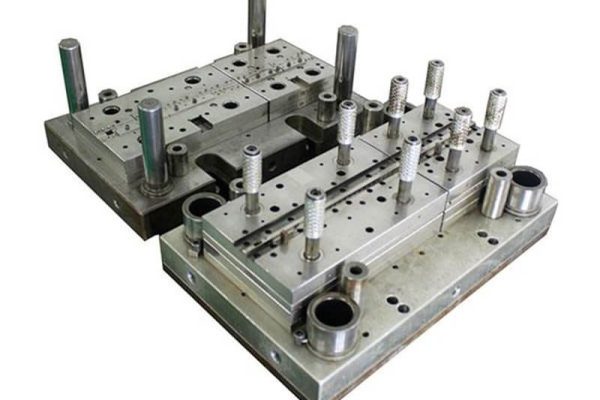
Types of High-Pressure Die-Casting Machines
High-pressure die Casting (HPDC) uses two main machine types, each suited to different metals and production needs. The right choice affects quality, speed, and cost.
Cold Chamber Die Casting Machines
Cold Chamber Die Casting Machines are commonly used for metals with high melting points, like aluminum, brass, and copper. In this machine, molten metal is manually added to the injection chamber or with a ladle before being injected into the mold.
This method is used for metals that cannot be injected directly from the furnace due to high temperatures. The molten metal is injected into the mold using a piston or plunger under high pressure, then cools and solidifies quickly.
Hot Chamber Die Casting Machines
Hot Chamber Die Casting Machines are designed for metals with lower melting points, like zinc, magnesium, and lead. In this machine, the injection system is submerged in the molten metal, which stays at the right temperature in the chamber.
Hot chamber machines are faster than cold chamber machines because the injection chamber is always ready to inject molten metal. However, they cannot be used for metals with high melting points, and the heat can damage the machine’s parts.
Advantages of High Pressure Die Casting
High Pressure Die Casting (HPDC) delivers unique benefits, making it a top choice for manufacturing metal parts. Let’s examine its key advantages.
High Production Rates
One of the most significant advantages of HPDC is its speed. The process is very efficient, with cycle times often ranging from just a few seconds to a few minutes, depending on the part’s complexity. This quick production rate makes
Excellent Dimensional Accuracy
Molten metal is injected into a steel mold under extreme pressure, which helps it fill the mold completely, capturing even the smallest details and tight tolerances. This results in very accurate parts that often require little or no additional machining.
Surface Finish and Complex Geometries
Another benefit of HPDC is its ability to produce parts with smooth surfaces. The mold’s fast cooling of molten metal creates a smooth finish that usually needs no further work.
Cost-Effectiveness for Mass Production
The speed, consistency, and low material waste make HPDC a cost-efficient option for mass production. Manufacturers save on labor, material costs, and post-processing time.
Limitations of HPDC
While HPDC offers many advantages, it has some significant constraints before selecting it for your project.
Material Limitations
HPDC is generally suitable for alloys with lower melting points, such as aluminum, zinc, and magnesium. However, it is not ideal for all metals. Materials with higher melting points can be challenging to cast using HPDC due to the extreme temperatures and pressures.
Equipment Costs
The initial setup costs for HPDC can be relatively high, particularly regarding the equipment required. Die-casting machines and molds are expensive, especially if the design is complex or requires specialized features.
Size and Weight Restrictions
Although HPDC is excellent for producing small to medium-sized parts, it has limitations regarding size and weight. The process is best suited for components that are not excessively large or heavy. More significant parts require more powerful machines and molds, which can become impractical or inefficient.
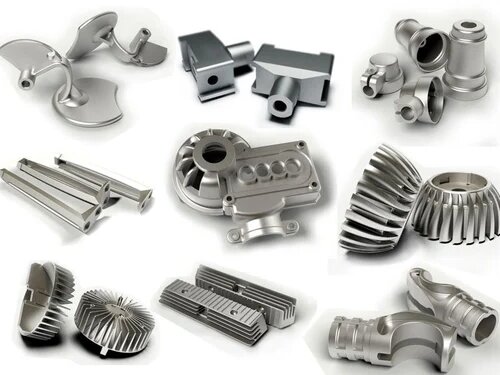
Applications of High Pressure Die Casting
High Pressure Die Casting (HPDC) is widely used across industries that demand high-volume production of precision metal parts. Let’s explore its key applications.
Automotive Industry
HPDC produces critical components for modern vehicles:
- Engine & Transmission: Cylinder heads, pistons, gearbox housings
- Structural Parts: Subframes, suspension components, steering knuckles
- Body & Trim: Door handles, brackets, decorative elements
Consumer Electronics
HPDC creates durable, lightweight enclosures and components:
- Laptop/Tablet Cases: Thin-walled magnesium alloy frames
- Smartphone Components: Internal brackets and shielding
- Home Appliances: Housings for power tools, vacuum cleaners
Aerospace Components
HPDC meets stringent aerospace requirements:
- Aircraft Interiors: Seat frames, overhead bin components
- Avionics: Enclosure for navigation/communication systems
- Drone Components: Lightweight structural parts
Other Industries
HPDC serves diverse manufacturing sectors:
- Medical: Equipment enclosure, surgical instrument parts
- Industrial: Pump housings, hydraulic components
- Renewable Energy: Wind turbine components, solar panel frames
HPDC vs. Other Casting Methods
The proper casting method depends on production volume, material, and part requirements. Here’s how HPDC compares to standard alternatives.
| Casting Method | Production Speed | Precision | Surface Finish | Complex Geometries | Material Suitability | Best For |
|---|---|---|---|---|---|---|
| HPDC | High | High | Excellent | Excellent | Low to Medium Melting Point Alloys | Mass Production of Small to Medium Parts |
| Sand Casting | Low | Low | Rough | Low | Wide Range of Metals | Large Parts, Low Volume |
| Investment Casting | Low | Very High | Excellent | Excellent | High-Performance Alloys | Highly Detailed Parts, High-Performance Materials |
| Gravity Die Casting | Medium | Medium | Good | Medium | Medium Melting Point Alloys | Medium-Sized Parts, Good Mechanical Properties |
Quality Control in High Pressure Die Casting
Maintaining high quality in HPDC requires understanding common defects and implementing preventive measures. Here’s what manufacturers need to know.
Common Defects in HPDC
Porosity
Porosity refers to forming small holes or voids within the cast metal, which can weaken the part and affect its performance. These voids can result from trapped air, gas, or moisture during molten metal injection.
Cold Shuts
Cold shuts occur when two streams of molten metal fail to fuse properly during injection, leaving visible lines or seams in the finished part. This typically happens if the metal cools too quickly, leading to incomplete filling of the mold.
Methods to Prevent Defects
Pressure Optimization
The correct pressure ensures that the molten metal fills the mold and flows smoothly into every cavity, reducing the risk of trapped air or gas. Proper pressure also helps to avoid cold shuts by maintaining a consistent temperature and flow during injection.
Die Maintenance
Over time, the die can wear down, resulting in improper metal flow, mold damage, or inconsistent cooling. Regular inspections and cleaning of the die ensure that it remains in good condition and can produce high-quality parts.
Conclusion
High Pressure Die Casting is a fast, precise manufacturing process ideal for mass-producing complex metal parts. It creates lightweight, durable components with excellent surface finishes and tight tolerances.
If you need high-quality die-cast parts with fast turnaround and competitive pricing, our team is here to help. Contact us today for a free consultation.
FAQs
Why is it called die casting?
It’s called die casting because the molten metal is injected into a mold (called a “die”) under high pressure to form the desired shape. The die is typically made of steel and can be reused many times.
How does die casting differ from other casting production methods?
Die casting differs from other methods because it uses high pressure to inject molten metal into a mold, resulting in parts with high precision and smooth surfaces. Other methods, like sand casting, rely on gravity to fill the mold, leading to less detailed parts.
What is the difference between low pressure and high pressure die casting?
In high-pressure die casting, molten metal is injected into the mold under very high pressure, making it suitable for complex, high-volume parts. Low-pressure die casting uses lower pressure to fill the mold, which is often used for more significant parts or when more control over metal flow is needed.
Hey, I'm Kevin Lee

For the past 10 years, I’ve been immersed in various forms of sheet metal fabrication, sharing cool insights here from my experiences across diverse workshops.
Get in touch

Kevin Lee
I have over ten years of professional experience in sheet metal fabrication, specializing in laser cutting, bending, welding, and surface treatment techniques. As the Technical Director at Shengen, I am committed to solving complex manufacturing challenges and driving innovation and quality in each project.


